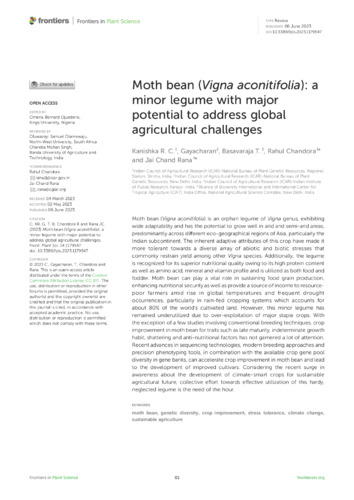Moth bean (Vigna aconitifolia): a minor legume with major potential to address global agricultural challenges
Moth bean (Vigna aconitifolia) is an orphan legume of Vigna genus, exhibiting wide adaptability and has the potential to grow well in arid and semi-arid areas, predominantly across different eco-geographical regions of Asia, particularly the Indian subcontinent. The inherent adaptive attributes of this crop have made it more tolerant towards a diverse array of abiotic and biotic stresses that commonly restrain yield among other Vigna species. Additionally, the legume is recognized for its superior nutritional quality owing to its high protein content as well as amino acid, mineral and vitamin profile and is utilized as both food and fodder. Moth bean can play a vital role in sustaining food grain production, enhancing nutritional security as well as provide a source of income to resource-poor farmers amid rise in global temperatures and frequent drought occurrences, particularly in rain-fed cropping systems which accounts for about 80% of the world's cultivated land. However, this minor legume has remained underutilized due to over-exploitation of major staple crops. With the exception of a few studies involving conventional breeding techniques, crop improvement in moth bean for traits such as late maturity, indeterminate growth habit, shattering and anti-nutritional factors has not garnered a lot of attention. Recent advances in sequencing technologies, modern breeding approaches and precision phenotyping tools, in combination with the available crop gene pool diversity in gene banks, can accelerate crop improvement in moth bean and lead to the development of improved cultivars. Considering the recent surge in awareness about the development of climate-smart crops for sustainable agricultural future, collective effort towards effective utilization of this hardy, neglected legume is the need of the hour.

